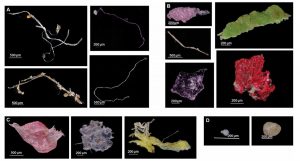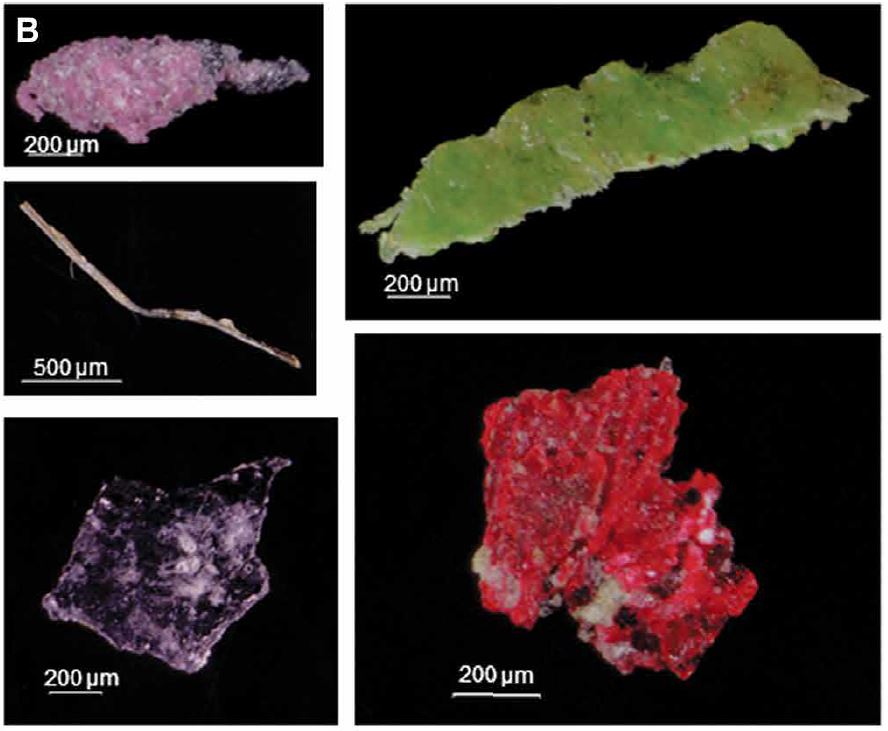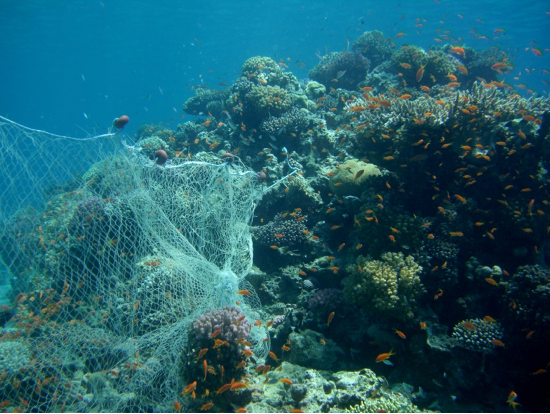Brandon, J.A., Jones, W. and Ohman, M.D., 2019. Multidecadal increase in plastic particles in coastal ocean sediments. Science Advances, 5(9), p.eaax0587.
Why it’s important
We are living in an era scientists are proposing as a new geological epoch, the Anthropocene, or the current time period in which humans have drastically impacted the environment. The start of the Anthropocene is marked by the introduction of plutonium in 1945 but can also be also be denoted by the creation of plastics. After 1945, the world population and industrial production increased, ultimately leading to the introduction of plastics into the marine environment. It is estimated that be between 4.8 to 12.7 million metric tons of plastic waste enters the ocean yearly, that’s equal to the weight of approximately 1 million elephants. Plastic that enters the world’s oceans gets broken up into smaller and smaller pieces never completely disappearing but instead are called microplastics. Previously, research looking at microplastics has focused on plastics found in surface waters and in areas within the Pacific, especially the North Pacific Garbage Patch. Microplastics were first documented in the Pacific in 1972. However, microplastics in the surface water are not preserved for longer periods so it is possible that microplastics were present in the area well before they were first seen in 1972. Fortunately, there is another way to see just when plastics first appear in an area and how their accumulation changes over time. As microplastics sink through the ocean they can accumulate on top of sediment on the bottom of the ocean with other sinking biological particles that over time form layers in the sediment. Therefore, looking at sections of deep ocean sediment, or sediment cores, allows scientists to determine age similar to looking at fossils in different layers of rock on land. To look at how the introduction of plastics has changed off the coast of California for a longer period these authors investigated a sediment core dating back to 1836. This study is the first of its kind to analyze these long-term trends in undisturbed sediment.

What was studied
A sediment core was taken off the coast of California in the Santa Barbara Basin at a depth of approximately 580 m (1,900 feet below the surface of the water). This area off the coast of California is particularly good for looking at how sediment is deposited over time as several currents feed into this basin and water flow slows down deeper in the water column leading to an increase in sediment and less disruption of layers the sediment makes over time. A box core was used to sample the sediment – essentially a frame with a metal tube was driven into the sediment using a weight, closed with a blade, and brought back to the surface. Because layering of the sediment over time is so important to establishing dates for each layer the researchers confirmed the surface sediment was undisturbed by looking for a bacterial mat that would be present in the natural environment. After-which the researchers took special care to sample within the core to minimize plastic contamination.
After collecting the sediment core, scientists photographed the core, dated the individual layers and sectioned the core into small slices. Each small slice, equivalent to a specific time period were analyzed sequentially, i.e. a layer from 1900 was analyzed then 1945 etc. These smaller slices were then sifted through a 104 µm sieve, and only the particles larger than 104 µm were analyzed. After each sediment sample was processed and dried a microscope was used to look through all particles found in the core to distinguish plastic from biological particles. Particles were then separated by four shapes; fiber, fragment, film, and spherical (see particle image). Because plastic was not introduced into the environment until 1945, any plastic particles found before 1945 (1836-1945) were deemed contamination and the total amount of particles within each contaminated year was subtracted from all other layers to account for this contamination.
Visual identification can be used to confirm particle type and size, however particle composition can also be determined using Fourier transform infrared (FTIR) identifications. FTIR uses spectroscopy, a method using wavelengths of light to identify particles. Of those that were visually classified as plastic particles 87.5% were confirmed to be plastic using FTIR.

Major Findings and Conclusions
This study largely found an exponential increase in sediment plastic from 1945-2009 that is linked with population and global plastic production. A majority (77%) of the particles found within the sediment core were fibers, while 14% were fragments. Plastic fibers include particles from synthetic clothing that can come off during washes or as clothes are discarded. While plastic fragments are found in more commonly thought of plastic pollution like plastics bottles. For more information on plastic microfibers visit https://youtu.be/BqkekY5t7KY, or another common plastic pollution particle, spherical beads visit https://youtu.be/uAiIGd_JqZc. When someone says plastic pollution, plastic fibers are not generally what we think of and yet this is the most common plastic particle that settles into ocean sediment for hundreds of years. The authors also found 100 particles per square centimeter of area are deposited per year in the Santa Barbara basin. With increasing global populations, especially along coastlines, the amount of plastic pollution is predicted to increase exponentially. The effects of these plastic particles on animals that live on the sediment is unclear, but many particles can also absorb toxins from the water and bioaccumulate in these organisms. These authors highlight the importance of thinking about minimizing plastic production and studying the impacts of this pollution on the marine environment in future years.
Some efforts to help reduce microfiber pollution in everyday life include washing synthetic fibers less frequently, in cold water with less revolutions to cause less friction and release fewer fibers. There are other products that help reduce plastic pollution while washing laundry including the cora ball or guppy friend wash bag. For more ideas see https://www.surfrider.org/coastal-blog/entry/bills-and-best-practices-for-microfiber-pollution-solutions.
I’m a PhD student in the Rynearson Lab at the University of Rhode Island (URI) Graduate School of Oceanography (GSO). My research interests are focused on human impacts on the oceanic ecosystem, particularly effects on the primary producers (phytoplankton) at the base of the food web. Currently, I work with cultures from regions of the ocean that are nutrient limited and will conduct experiments to investigate how these phytoplankton survive.


